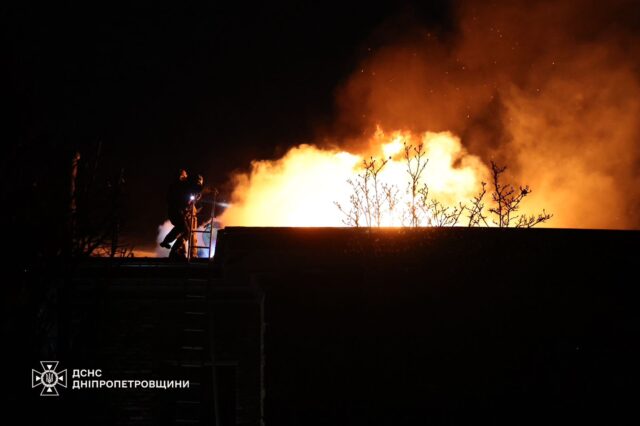
Russian Attack on Ukraine Becomes Another Attempt at Intimidation
Publication: Eurasia Daily Monitor Volume: 21 Issue: 171
By:

Executive Summary:
- Russia launched a new intermediate-range ballistic missile (IRBM) against Ukraine for the first time on November 21, targeting the city of Dnipro and Ukraine’s military-industrial complex in retaliation for Ukraine’s use of Western-supplied long-range weapons against Russian territory.
- Russia’s strike against Ukraine, coinciding with updates to its nuclear doctrine, reflects Moscow’s desperation to regain psychological leverage amid diminishing nuclear deterrence credibility.
- Moscow seeks to intimidate NATO and test Western unity through escalation, but its strained military capacity and risk of retaliation may undermine this strategy, leading to further isolation and potential backlash.
On November 21, Russia launched a new experimental hypersonic intermediate-range ballistic missile (IRBM) against Ukraine for the first time. This attack was launched from Russia’s Astrakhan oblast, which is 740 kilometers (460 miles) away from the target of Dnipro. The Ukrainian Air Force claims that Russia’s attack consisted of a conventional intercontinental ballistic missile, a Kh-47M2 Kinzhal air-launched ballistic missile, and seven Kh-101 cruise missiles, while Russian President Vladimir Putin declared that the Russian Armed Forces fired the new IRBM called “Oreshnik” (“Hazelnut”) (Kyiv Independent; T.me/kpszsu, November 21). Russia launched this attack just days after signing an updated version of its nuclear doctrine, a probable intimidation tactic from the Kremlin (Kremlin.ru, November 19). Russian President Vladimir Putin released a statement condemning the Ukrainian strikes against Russia using US-provided ATACMS and HIMARS and the UK-provided Storm Shadow against an artillery munition depot in Bryansk oblast and the joint force command center in Kursk region. He declared that the strike was a response to Ukraine’s missile strikes and intended to target “one of the largest Industrial Complexes since the Soviet Union” in Dnipropetrovsk (Kremlin.ru, November 21). Russia’s escalation against Ukraine signals an alarming shift in strategy, escalating the conflict and aiming to reassert its nuclear intimidation tactics.
Since at least 2023, Russia has been very concerned that its nuclear blackmail has stopped working (see EDM, September 26, 2022, June 17, September 16, 30, November 20). For example, the mock-up nuclear warhead onboard the Russian cruise missile in November 2022 did not create a lasting impression of Russia’s nuclear threat (Defence-ua.com, November 17, 2022). Today, Moscow is trying to replace the concept of nuclear deterrence with the concept of “nuclear intimidation” and convince the international community and domestic audience that the updated nuclear doctrine will hold more weight in practice than the paper it is printed on. This intimidation seems to be all talk, as the Ukrainian armed forces continue their incursion in Kursk oblast and regularly hit military and industrial facilities all around European part of Russia (Globalaffairs.ru, June 13, 2023; see EDM, October 16, 24; Interfax.ru, October 30; Udm-info.ru, November 17).
Putin described“Oreshnik” as Russia’s new IRBM system, which has a range of 2,000 kilometers (7,456 miles). “Oreshnik” consists of a conventional warhead and an intermediate-range (500–5,500 kilometer; 310–340 miles) ballistic missile or a light intercontinental ballistic missile (ICBM) with a range of more than 5,500 kilometers (3,400 miles), but it has a range lower than the ICBM “Yars.” Russia has been working on a missile called RS-26 “Rubezh,” however, since the late 2000s–early 2010s when it began its confrontation with the West. That missile was based on ICBM “Yars” but was 1.5 times lighter. Russia was possibly aiming to make the manufacturing process easier by transitioning to developing “Rubezh,” considering the decreased amount of sophisticated solid fuel required. Even though the project was probably canceled by 2018, it could either be revived later, or it could have several remaining test missiles, one of which could be used against Ukraine (TASS, July 1, 2014; Vz.ru, November 18, 2015; TASS, March 22, 2018).
The origins of this project involving the conventional warhead lie in Russia’s concerns about the American Conventional Prompt Global Strike (CPGS) concept, which began as early as the late 2000s–early 2010s (Carnegie Politika, October 4, 2013; January 12, 2015). Russia could try to develop its own version of CPGS even though it is not compatible with how the Russian armed forces conduct warfare and with the state of the Russian military-industrial base. The undoubtedly low potential production rate and undoubtedly high cost of this missile prevent Russia from using its conventionally armed version on a regular basis.
Nevertheless, the Kremlin decided that the spectacular strike on Dnipro was worth potential escalation because it urgently needs to change the political, psychological, and even the combat situation in Ukraine to its favor. Russia will almost definitely use the threat of further escalation in its favor, which could lead to a “war of nerves.” Moreover, Russia could become interested in turning its war against Ukraine into a global conflict because it still believes that the North Atlantic Treaty Organization (NATO) is far from being united and that US and European political and military leaders are not psychologically prepared for a real conflict. Responding with force is perceivably the only effective way to deter the aggressor from further escalation (see EDM, November 15). While Russia is trying to intimidate both Ukraine and the United States and its allies and divide them, it must be wary of its own intimidation of any potential retaliation.



